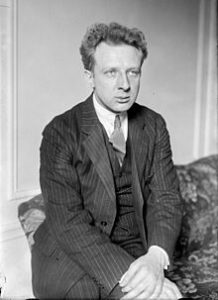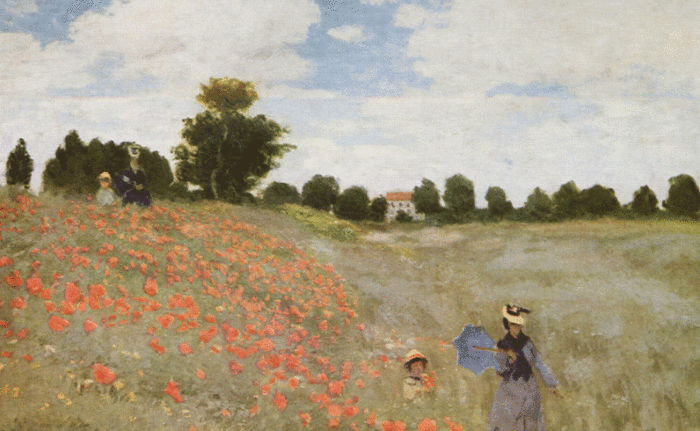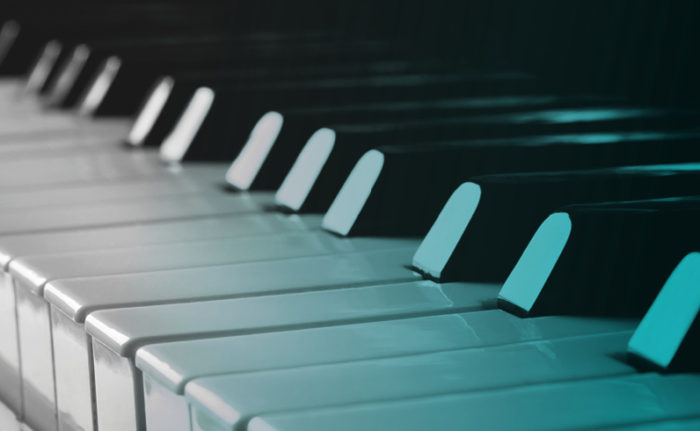On April 4, 6, and 7, the Houston Symphony presents a stirring all-Russian program featuring acclaimed Rachmaninoff interpreter Simon Trpčeski in the composer’s Piano Concerto No. 4. In this post, discover the turbulent history behind Rachmaninoff’s final piano concerto. Get tickets and more information here.
Composer Interrupted

Rachmaninoff’s Fourth Piano Concerto had a lengthy genesis; indeed, by some accounts it may have taken almost 30 years to reach its final form. When Rachmaninoff composed his Etude Tableau in C minor, Opus 33, No. 3 in 1911, he withheld it from publication, likely because he realized it had the potential for something more. Indeed, part of the etude would ultimately morph into the climax of the second movement of his Fourth Piano Concerto. Based on surviving sketches and a contemporary press report, scholars speculate that he may have begun work on the concerto during the summers of 1914 and 1915, although these putative efforts did not yield a finished composition.
In October 1917, Rachmaninoff’s life was forever changed as Russian society disintegrated in the wake of the Bolshevik coup. He and his family fled to Sweden in December, taking with them only what they could fit in their suitcases. Rachmaninoff’s home would be burnt to the ground, and he lost almost everything. To restore his family’s wealth, he abandoned composition and embarked on the life of a traveling piano virtuoso. After enduring grueling concert tours season after season, in 1926 he at last felt secure enough to take a sabbatical and return to composing.
Revisions

The result was the completion of the first version of the piano concerto, which premiered in March 1927 with Leopold Stokowski conducting the Philadelphia Orchestra and Rachmaninoff himself as soloist. He dedicated the piece to his friend and fellow Russian émigré, the composer Nikolai Medtner (who, like Rachmaninoff, continued to compose in a Romantic musical style well into the 20th century). Unfortunately, the critics were harsh, and Rachmaninoff himself seemed dissatisfied with the work. He began to revise it prior to its publication the following year.
After leaving Russia, Rachmaninoff became increasingly obsessed with musical economy, and made substantial cuts to a number of his earlier pieces, including his Third Piano Concerto and Second Piano Sonata. Even before the premiere of the Fourth Piano Concerto, Rachmaninoff had been concerned about its length, writing that “It will probably be performed like ‘The Ring’ [Wagner’s 15-hour operatic tetralogy] on several evenings in succession,” despite the fact that even the original version of the concerto was shorter than his previous work in the genre. Rachmaninoff cut 114 measures from the first published version that appeared in 1928, but remained dissatisfied with the work. Near the end of his life, during the summer of 1941 he revised it again, removing an additional 78 measures and substantially rewriting the finale. He recorded this version with Eugene Ormandy and the Philadelphia Orchestra (this classic recording is featured below).
The result is a focused yet subtle and complex masterpiece that features the lush orchestrations and expressive melodies for which Rachmaninoff is so well known; however, in terms of its structure and musical rhetoric, it is an unusually experimental and unconventional work from a composer who is usually thought of as stylistically conservative. The long time Rachmaninoff devoted to composing and revising the concerto would seem to indicate that the piece was particularly important to him. While his Second and Third Piano Concertos seems to explore conflicting emotions of melancholy and love, this concerto’s unusual features suggest alternative expressive aims. Perhaps in this work, which seems preoccupied with issues of struggle and acceptance, Rachmaninoff processed his feelings of displacement as an exile from his homeland.
The Music
The concerto begins in medias res, as if the music had been going on for some time already:
A vigorous orchestral crescendo leads to the heroic entrance of the soloist with the main theme of the movement; it begins by climbing upwards with an ascending scale, but then descends, losing strength as if exhausted by the ongoing struggle. This duality between rising and falling melodic ideas plays an important role throughout the concerto. Another orchestral wave spurs the soloist onward, but the music dwindles again. Solo woodwinds lead the piano through a strange yet beautiful transitional passage, until the English horn slows the tempo with a musical premonition of the ensuing second theme, a melody for solo piano formed of delicate, falling arabesques. Gradually the strings join the soloist in this Romantic theme with rising and falling melodic figures. Suddenly, the music becomes more nervous, building to a flurry of notes for the soloist.
The movement’s development begins with the return of the falling measures of the main theme in the strings. This idea alternates with piano passagework until the soloist intones an ominous version of the rising motif. This initiates a long, intense crescendo, during which the rising motif lurks menacingly in the background. At last, the tension breaks in a climactic passage. The movement almost sounds as if it is about to come crashing to an end prematurely, but this intense passage subsides as the main themes of the movement return in reverse order. Alternating with the rising motif, the solo flute and oboe return to the delicate second theme above accompaniment from the soloist. A crescendo seems to prepare the triumphant return of the main theme, but instead the theme becomes dreamy and wistful in the violins. The more turbulent atmosphere of the work’s beginning only returns in the brief coda, which brings the movement to a sudden end.
The slow second movement begins with the piano alone, playing a few measures as if improvising a connection between movements (improvised transitions between different pieces were once common in piano recitals). The violins then introduce the main idea of the movement, a simple melodic figure based on three descending notes. The quasi-improvised quality of the music continues as this simple idea becomes an object of meditation; throughout the movement, the soloist and orchestra vary this main idea, almost riffing on it as jazz musicians would. After emigrating, Rachmaninoff spent many years living in and around New York City, where he often enjoyed listening to jazz musicians play. His favorite jazz tune was Irving Berlin’s “Blue Skies.”
Midway through the movement, the gentle melancholy of this fantasia is interrupted by a violent episode. The piano responds, cantabile e tranquillo (“singing and tranquil”), with a rising motif—the motif itself, however, falls a step each time it appears. This brief but memorable passage soon returns to the falling main idea, out of which a long, arching phrase arises in the violins and cellos. The main idea returns as the movement fades away.
Without pause, the third movement begins with a startling cymbal crash. Soon after, the soloist launches into a furious, carnivalesque theme with a descending contour. The orchestra soon joins in for a variation on this circus-like melody, which seems on the brink of spiraling out of control. A brief but colorful transitional passage then arrives at a more assured, even heroic, fanfare-like motif in the piano, which introduces a warm rising theme played by a solo horn. The piano responds with its own music, which rises hesitantly, bit by bit, until returning to the fanfare motif.
The orchestra, however, interrupts and begins to develop the circus-like main theme. The piano responds with descending scales, which lead into a mysterious dream world. After a piano flourish, the music comes to a complete stop, but this reverie is broken by the orchestra, which plays nervous fragments of the circus-like main theme. This developmental music gradually builds as ideas from the first movement return, including the introductory orchestral flourish that began the concerto, until it climaxes with the same, searing music that served as the climax of the first movement. The music then really does seem to disintegrate as virtuoso figuration for the pianist races to the concerto’s powerful, yet ambiguous final chords.
Don’t miss Rachmaninoff’s Piano Concerto No. 4, part of our Tchaikovsky & Rachmaninoff program April 4, 6, and 7, 2019! Visit houstonsymphony.org for tickets and more information.
We want to hear from you! Tell us what you think in the comments below.



